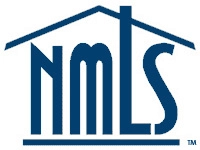North Star Mortgage’s Rates
At North Star Mortgage Network, we understand that securing a mortgage is one of the most significant financial decisions you’ll make in your lifetime. That’s why we’re committed to providing support every step of the way. Whether you’re exploring your options or need assistance with an ongoing process, reaching out to us is simple and straightforward.
Understanding how mortgage rates are determined can help you make informed decisions when buying a home or refinancing a mortgage. Several factors influence mortgage rates, ranging from economic indicators to individual borrowers’ profiles. Let’s dive into the key elements that lenders consider when setting these rates.
1. Economic Indicators
The broader economy plays a significant role in determining mortgage rates. When the economy is strong, with low unemployment rates and higher consumer spending, mortgage rates tend to increase. Conversely, during an economic downturn or recession, rates usually drop to stimulate borrowing and investment.
Inflation: Inflation reduces the purchasing power of money, which in turn influences interest rates. When inflation is high, lenders demand higher rates to compensate for the decreased value of future interest payments.
Federal Reserve Rates: The Federal Reserve does not set mortgage rates directly, but its monetary policy decisions influence short-term interest rates. When the Fed raises or lowers the federal funds rate, it trickles down to the mortgage market, affecting the rates that lenders offer.
2. Bond Yields
Mortgage rates often move in tandem with U.S. Treasury bond yields, particularly the 10-year Treasury note. When bond yields rise, mortgage rates typically follow suit because bonds and mortgages are competing for the same investment dollars. Conversely, when bond yields fall, mortgage rates usually decrease.
3. Lender Risk Consideration
Lenders assess the risk involved in lending money to homebuyers. Higher perceived risk usually results in higher interest rates. Several factors influence this risk assessment:
Credit Score: Borrowers with higher credit scores are considered lower risk and are often rewarded with lower mortgage rates. Conversely, those with lower credit scores usually face higher rates.
Debt-to-Income Ratio (DTI): This ratio compares your monthly debt payments to your gross monthly income. A lower DTI indicates a lower risk for lenders, which can lead to better mortgage rates.
Loan-to-Value Ratio (LTV): This ratio measures the loan amount against the appraised value of the property. A lower LTV is less risky for lenders, often resulting in lower rates.
4. Mortgage Type and Terms
The type of mortgage and its terms can also impact the rate:
Fixed-Rate vs. Adjustable-Rate Mortgages (ARMs): Fixed-rate mortgages have stable interest rates over the life of the loan, generally starting higher than ARMs. ARMs have lower initial rates that can change over time, depending on market conditions.
Loan Term: Shorter-term loans, such as 15-year mortgages, generally have lower rates compared to 30-year mortgages due to the reduced risk for lenders.
5. Down Payments
Larger down payments reduce the overall loan amount, which lowers the lender’s risk. Consequently, borrowers who can make significant down payments often benefit from lower mortgage rates.
Conclusion
Mortgage rates are influenced by a complex interplay of economic factors, bond yields, lender risk assessments, and individual borrower profiles. Understanding these elements can help you navigate the mortgage market more effectively and secure the best possible rate for your financial situation.
Mortgage Rates change on a daily basis and can vary depending on your unique situation. Simply use the quick form below to receive FREE and accurate rate quotes.
Did you get a rate quote from a bank or another mortgage lender?
Use our FREE Mortgage Offer Double Checker to make sure you’re getting the best terms possible on your mortgage. It only takes about 26 seconds to get started!














